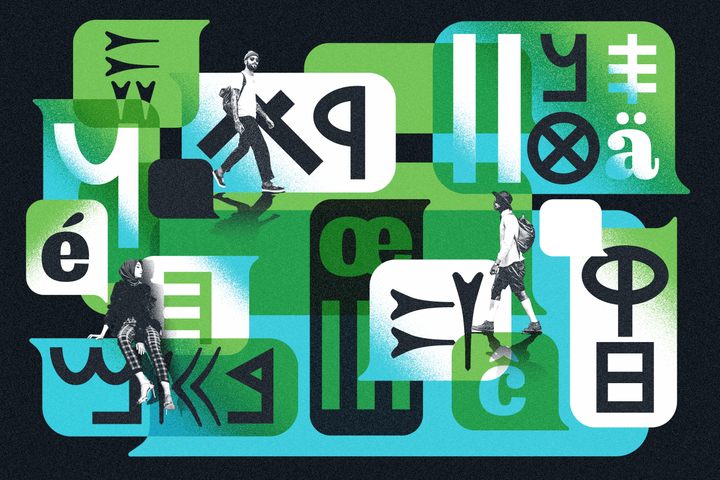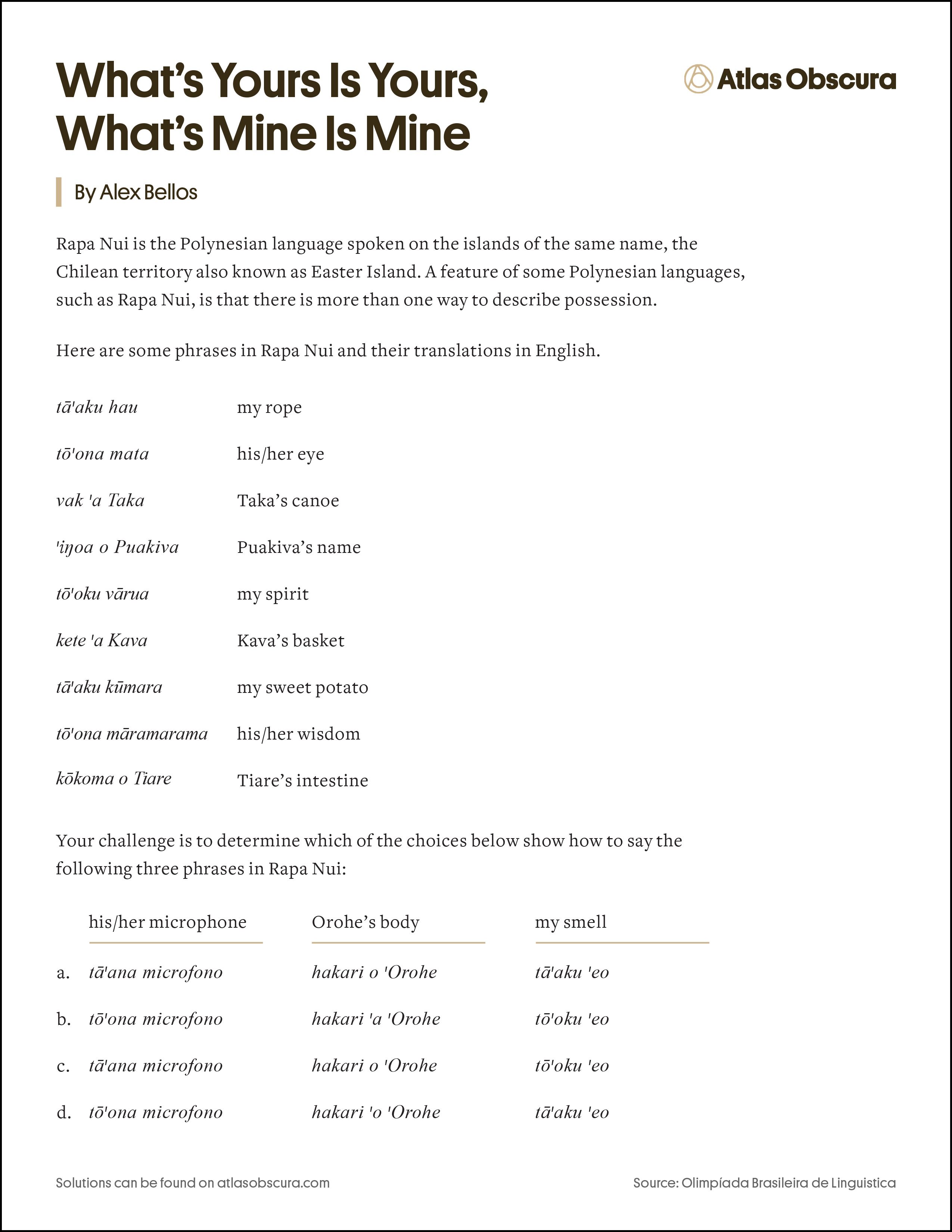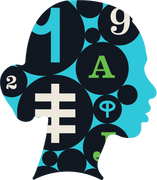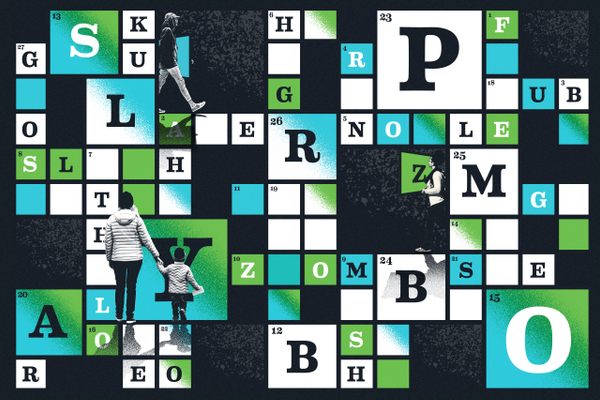
Puzzle Monday: What’s Yours Is Yours, What’s Mine Is Mine
Editor’s Note, November 2024: Thanks for checking out our puzzle archive! While the online version of this puzzle is no longer interactive, we suggest downloading the PDF, available below. You can find other archived puzzle PDFs available for download here.
Among our crosswords and other puzzles, we feature linguistic challenges from around the world from puzzle aficionado and writer Alex Bellos. A PDF of the puzzle, as well as the solution, can be downloaded below.
Rapa Nui, or Easter Island, is a remote speck in the southeastern Pacific Ocean, most famous for the giant moai, stone figures with exaggerated heads that dot its treeless landscape.
The Indigenous language spoken there, also called Rapa Nui, is currently at risk of joining the monoliths as relics of the past; it is spoken by only about one in 10 children on the island under 18, with the rest speaking Spanish, the official language of Chile, which annexed the island in the 19th century.
“The Rapa Nui language has been suffering in agony for more or less three decades,” says María Virginia Haoa Cardinali, who in 2004 founded the Rapa Nui Language Academy to help increase the number of speakers. “The preservation of the language is vitally important for all the Rapa Nui Polynesian people.”

Rapa Nui is a member of the Polynesian language family, which also includes Hawaiian, Tahitian, Samoan, and Maori. In the 1960s when Chileans from the mainland began to move to Rapa Nui, and the presence of the Chilean state became more visible, locals began to learn Spanish as well.
The population of the island is now about 8,000: about 40 percent native Rapa Nui and 60 percent mainland Chileans.
A survey from 1976 showed that 77 percent of children at the oldest school on the island were competent in Rapa Nui. By 1989, however, it was just 25 percent.
“We needed to radically reverse this trend,” says Haoa Cardinali, “We made an appeal to the community. In 1991 we created Rapa Nui Language Day, which has been held every year and is now one of the most important events of our people.”
Other initiatives include an immersion programme in which Rapa Nui is the primary language used in early years schooling, and “language nests,” an idea pioneered by the Maori in which elders spend time speaking the language with children.

Yet these initiatives have barely changed the overall trend. Just 11 percent of people under 18 speak the language, and while that grows in older age groups, languages only survive if there are new speakers.
Challenges to the survival of Rapa Nui are the shortage of Indigenous teachers and the lack of written material—in print and online. The Rapa Nui Language Academy aims to produce teaching material and compile a dictionary of the language. UNESCO and Chile’s Education Ministry are also involved in plans to safeguard and strengthen Rapa Nui language and culture.
Betty Haoa Rapahango, a Rapa Nui historian, says that the language has been evolving and incorporating Spanish words, with the risk of Rapa Nui words being forgotten. “The Rapa Nui language is very important for all the Rapa Nui people because it helps to keep our culture alive,” she says.
This puzzle is based on a feature of some Polynesian languages, including Rapa Nui—that there is more than one way to describe possession.

Stumped? Download the solution, with all the logical steps to get there!














Follow us on Twitter to get the latest on the world's hidden wonders.
Like us on Facebook to get the latest on the world's hidden wonders.
Follow us on Twitter Like us on Facebook